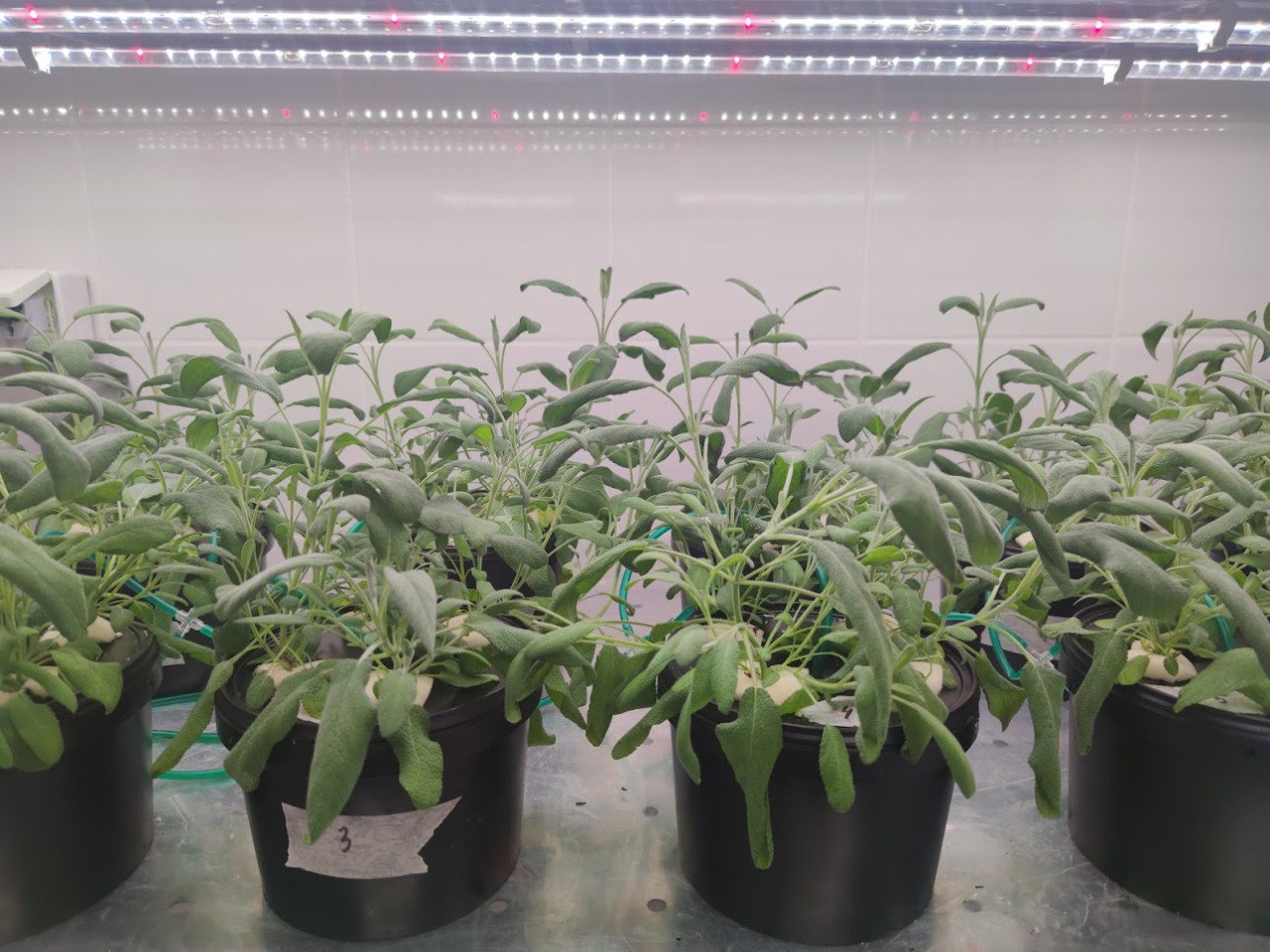Selenium supplementation has been shown to improve the yield and properties of sage, a medicinal plant used to treat inflammatory and digestive disorders, IKBFU scientists find. Selenium application improves antioxidant activity, increases the photosynthesis rate by 67%, and improves sugar, amino acid and protein content. The study was supported by a grant from the Russian Science Foundation. These results have been published in Scientia Horticulturae journal.
In response to the high demand for horticultural products and unpredictable environmental changes, scientists are looking for ways to increase the yield and nutritional value of plants. Biostimulants — substances that affect biochemical and physiological cell processes — are particularly suited to this purpose. Inorganic forms of selenium are widely used in agriculture to boost nutrient uptake in plants, increase crop quality and improve resistance to soil salinity and toxic heavy metals. However, data on how organic forms of the element affect plants are lacking.

Scientists from Immanuel Kant Baltic Federal University (Kaliningrad), Federal Scientific Vegetable Centre (Moscow), Iasi University of Life Sciences (Romania) and University of Naples Federico II (Italy) have investigated how organic and inorganic forms of selenium impact the growth and properties of medicinal sage (Salvia officinalis L.), a plant widely used in the production of anti-inflammatory drugs.
Researchers found that organic forms of selenium increased plant mass by 65%, compared to 20.5% for the inorganic forms. At the same time, when both inorganic and organic forms of selenium were used, the content of this element in the plant exceeded the control value by at least 30 times. Thus, sage treated with selenium-containing substances can potentially be used as a biological supplement to compensate for selenium deficiency in humans.
The positive effect of selenium on plant growth may be linked to its influence on the intensity of photosynthesis. The content of photosynthetic pigments increased by 45% after organic selenium treatments and 30% after the use of inorganic counterparts. In addition, photosynthesis rate increased by 67% and transpiration rate increased by 49%.
The amount of glucose, sucrose and total sugars in sage increased by 20–40% after treatment. At the same time, organic forms of selenium increased the content of amino acids and proteins in the leaves of the plant, while no such effect was observed in the case of inorganic forms.
Selenium treatment increased the antioxidant activity in plants, with treated sage being more resistant to reactive oxygen species — molecules that damage cell membranes, DNA and RNA.
| Lyubov Skrypnik, Head of the Project: |
| The study shows that selenium application can improve the medicinal and nutritional properties of sage. At the same time, organic and inorganic forms of selenium had different effects on plant growth and properties. The data will make it possible to select the optimal form of selenium that increases yields and improves the qualities of the medicinal herb. |
User profile for student
User profile for student
I give consent to the processing of the personal data provided, with Personal Data Processing Policy acquainted
Confirm consent